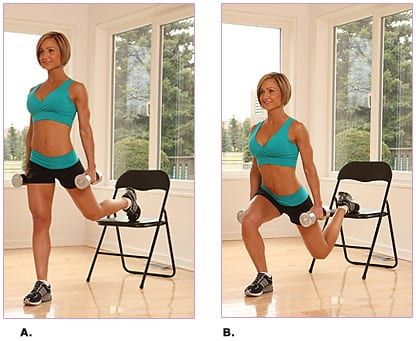In an earlier article I discussed the distinct differences between three main lower body unilateral movements and how lifters and athletes can better choose which is right for them. In this article, I am taking a deeper look at two extremely similar movements, the split squat versus the Bulgarian split squat, and addressing everything you need to know when deciding how to program and execute each of these movements.
The Split Squat
The split squat is very similar to the lunge and Bulgarian split squat, however it does not require the lifter to move dynamically under load or balance on one foot. In the below video, note how the lifter is still able to maintain both feet on the ground.
This is a good exercise to progress from step ups and lunges, yet prior to Bulgarian split squats, as it teaches proper ankle, knee, and hip joint mechanics under load while in a stationary movement since the lifter is still able to have both feet fixed on the floor. Additionally, the lifter is still able to transition load between both feet, rather than placing most of the load on the lead leg (see below).
The Bulgarian Split Squat
In the below video note how the back foot is elevated, either on a bench, step, or stable object.
This will increase the stability, balance and single leg strength necessary to complete the movement (in the lead leg), furthering the unilateral demands placed upon a lifter.
Complexity of the Split Squat vs. Bulgarian Split Squat
Unlike squats, these movement are unilateral lower body exercises, meaning that they will stress one leg at a time. Given that it is performed with one main leg, both of these lifts place more demand on balance, stability, coordination, and single leg strengtt. (Yes, the split squat has both on the ground, however one leg is asked to take a higher amount of loading.)
The split squat may be slightly less complex than the Bulgarian split squat in that the lifter is able to tradition some of the loading percentage to the back leg, whereas greater amounts of loading percentages are on the lead leg in the Bulgarian split squat. Either way, both lifts can be used to increase single leg strength, enhance bilateral deficit, and bulletproof a lifter’s ankle, knee, and hip mechanics.
Loading
Both of these movements fall within the assistance lift category and are generally not advised to train with near maximal loads, especially since it is a unilateral movement. That said, many lifters will train these movement with light to moderate loads for increased volume and speed to stress individual leg strength, movement patterning, muscular endurance, and hypertrophy.
Application to Sport
Because both of the movements are classified as assistance lifts, they both are generally good options for most power, strength, fitness, and athletic sports. The benefits of unilateral training are immense with both, however the Bulgarian Split Squat version can place more emphasis on balance and single leg strength (single one leg is up), making it potentially more beneficial for athletes recovering from injury or looking to challenge single leg strength and endurance.
Muscle Groups
Both of these movements target the hips, hamstrings, glutes, and quads, and can be altered to further isolate (for example, lengthening the distance between the front foot and the back will increase loading on the hip, glutes, and hamstrings.) For lifters looking to target specific muscle groups, there is not a large difference between these movements. To best bulletproof your joints, muscles, and movement patterns, I suggest cycling each into your regular unilateral leg training workouts.
Final Words
Unilateral exercises can be simple modifications from common bilateral movements. Coaches and athletes can implement them within most formal training programs after main lifts to ensure optimal development. By understanding the proper progressions and demands of both (balance needed, single leg strength, etc) coaches and athletes can properly challenge and progress necessary movement patterns and mechanics to ensure optimal performance and injury prevention.


